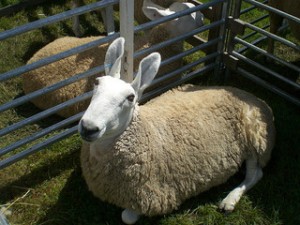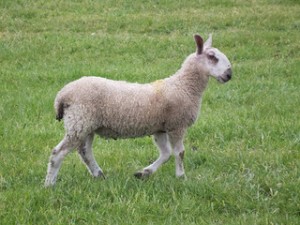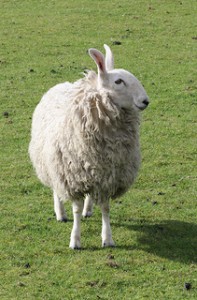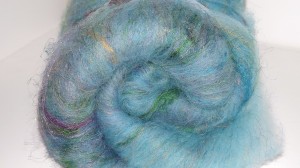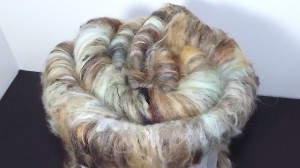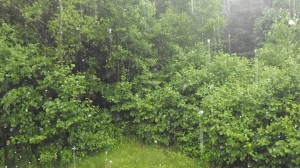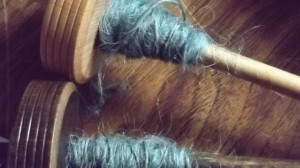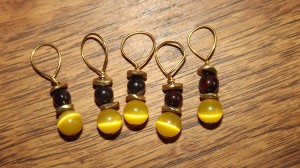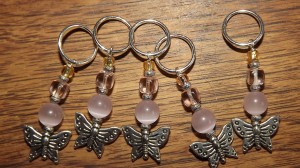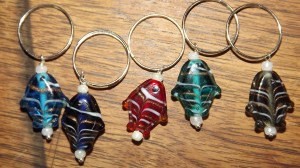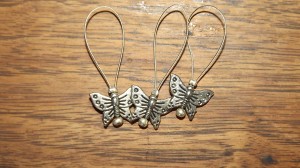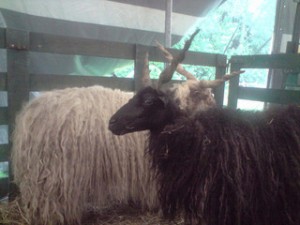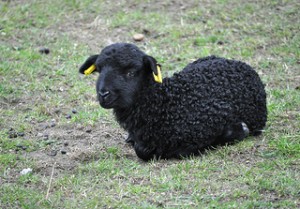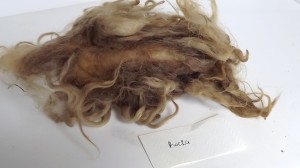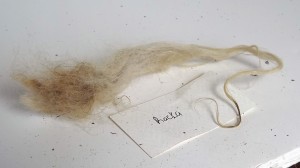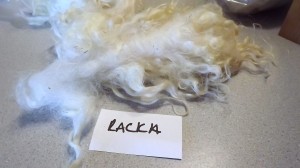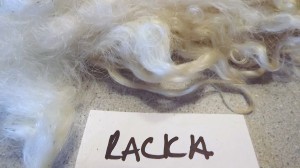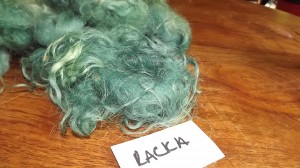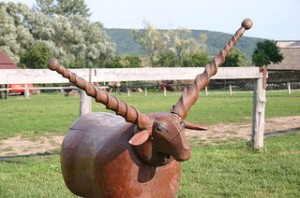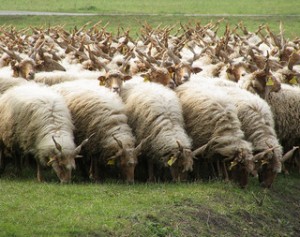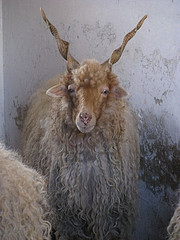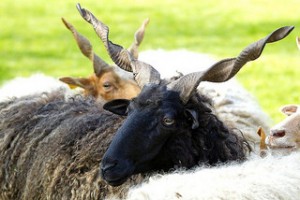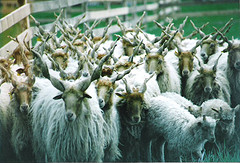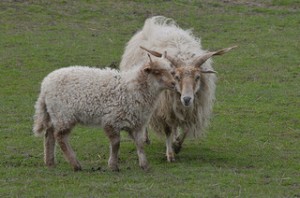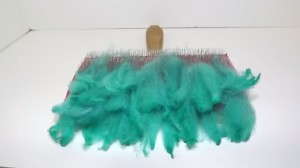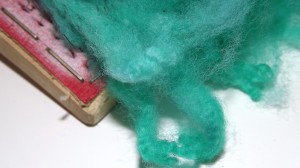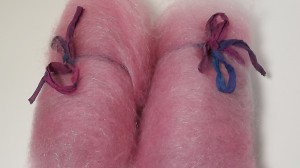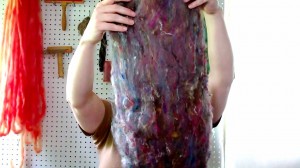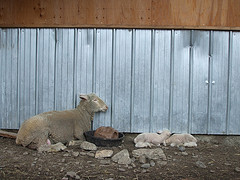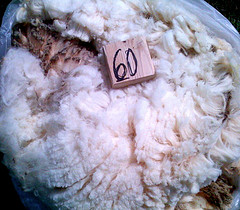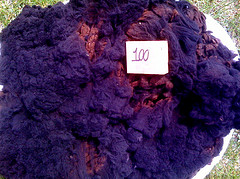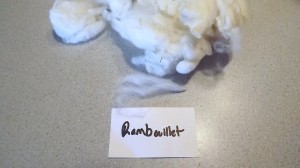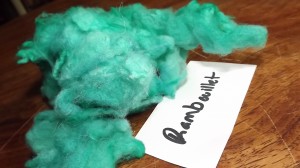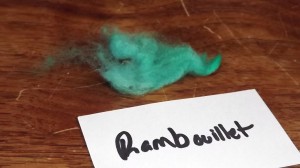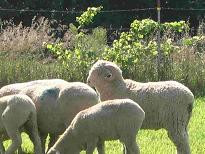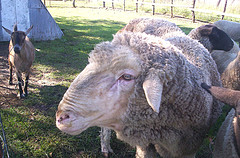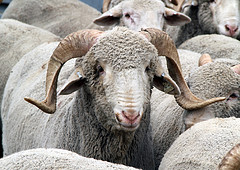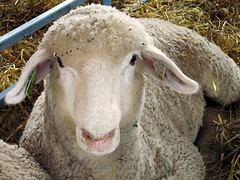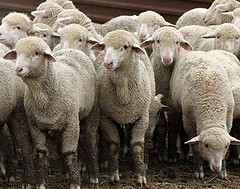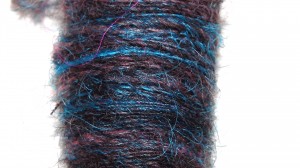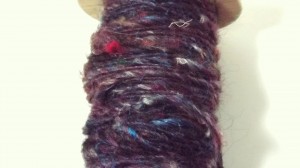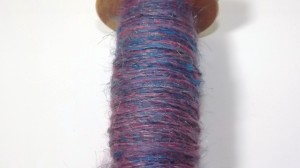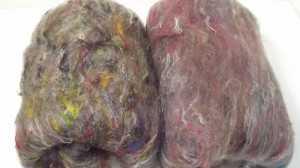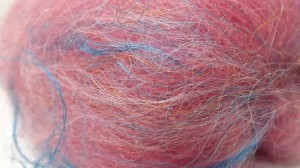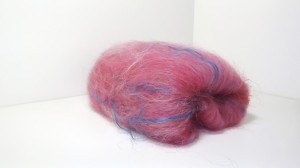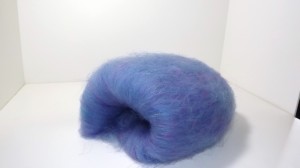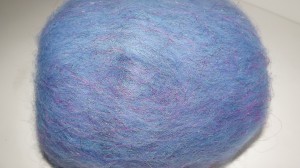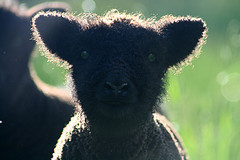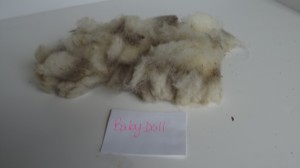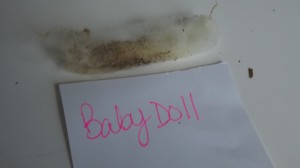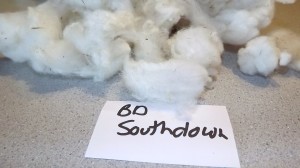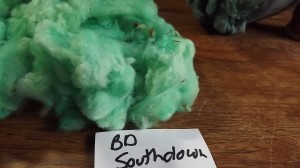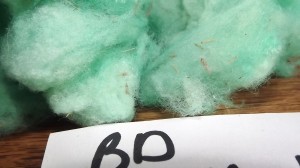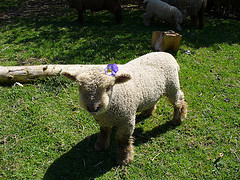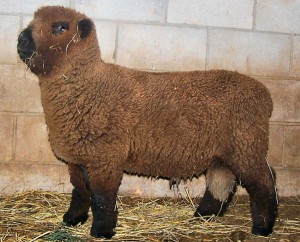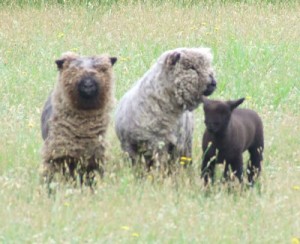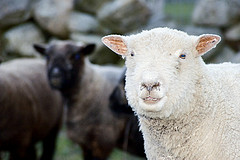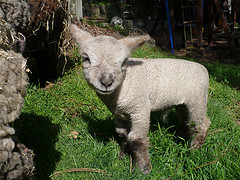Border Leicesters are a breed of sheep that originated in Northumberland, England. The name comes from their birthplace near the border of Scotland . It is believed that the foundation stock was Robert Blackwell’s improved or Dishley Leicesters. The ewes were either Teeswater or Cheviot although there is debate as to which was used. Perhaps both. By the end of the 19 century this breed was established in England and outnumbered the old English Leicester in popularity.
Border Leicesters are dual breed of sheep raised for meet and wool. They are polled and long -woolled. It is said that the first herd of Border Leicesters was brought to America by George Washington who kept his purebred flock at Mount Vernon. No one is really sure when they were introduced to North America but the 1920 census shows 767 purebred Border Leicesters in the U.S. The America Border Leicester Association
BThe English Leicester is said to have been introduced into the United States by George Washington, who kept a small purebred flock of Leicesters and used the rams extensively in his flock of 800 head at Mount Vernon. It is not known when the first sheep of Border Leicester type arrived in North America, but the 1920 census lists 767 purebred Border Leicesters in the U.S. The American Border Leicester Association was established in the U.S. in 1973.
Border Leicesters are a larger breed sheep. The rams can weigh in 175 -300 pds, and the ewes go from 150-225 pds. The ewes are productive, they are great milkers and wonderful mothers. This breed are good foragers and can get along with less feed than many other larger breeds. They are fast maturing. border Leicesters have a great temperament and are easy to handle. The have a regal look about them with their arched roman noses.
Check out some of the newest R&R BAtts
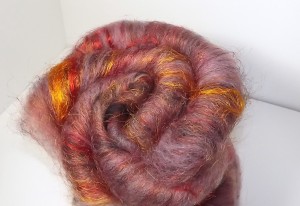
Information from wikipedia and The American Border Leicester Association
P.S. If you would like to be notified whenever there is awesomely fibery update here click the RSS feed!
